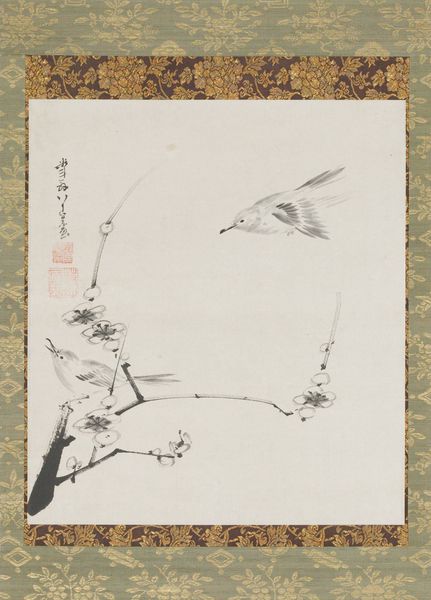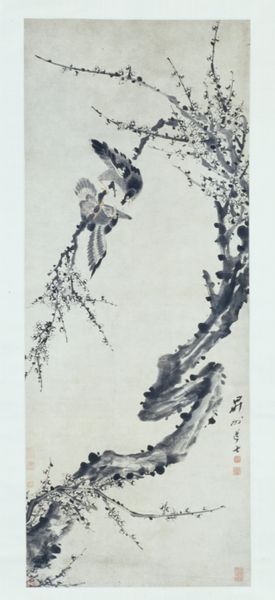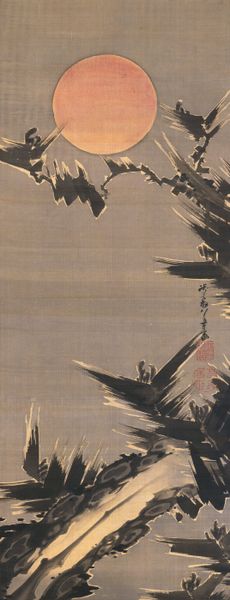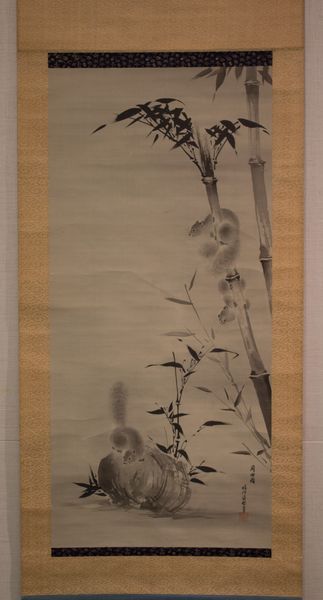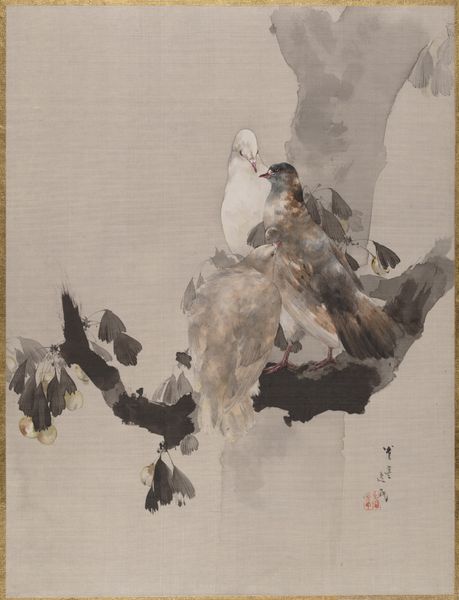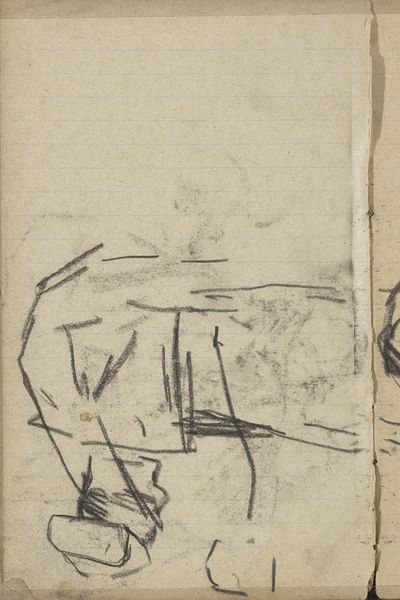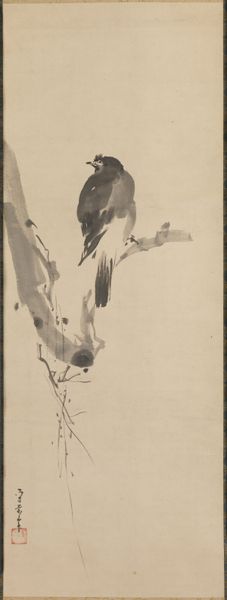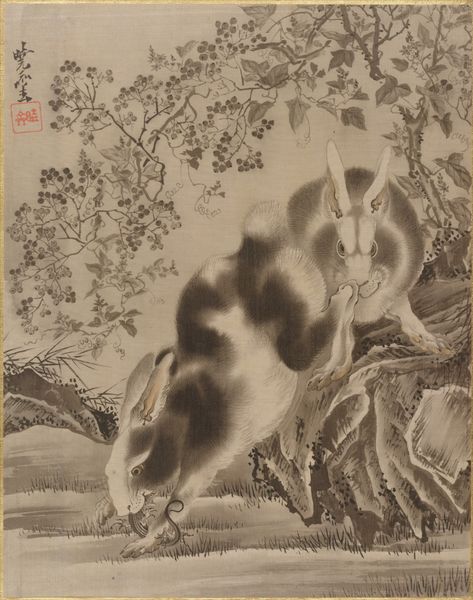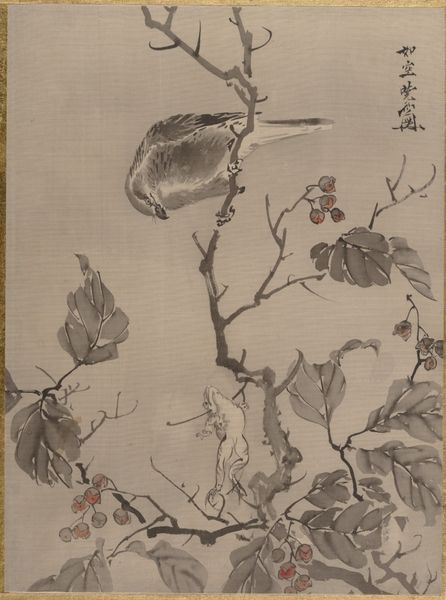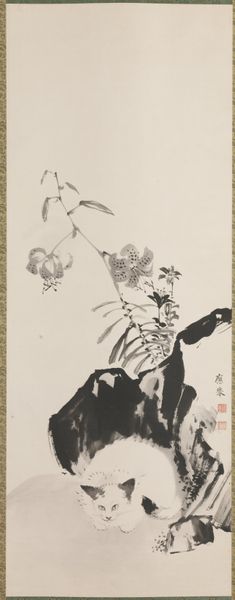
Bird Catching Fish Among Reeds 1877 - 1897
0:00
0:00
#
toned paper
#
fish
#
water colours
#
asian-art
#
bird
#
japan
#
possibly oil pastel
#
handmade artwork painting
#
underpainting
#
pastel chalk drawing
#
painting painterly
#
24_meiji-period-1868-1912
#
watercolour bleed
#
watercolour illustration
#
watercolor
Dimensions: 14 1/8 x 10 3/4 in. (35.9 x 27.3 cm)
Copyright: Public Domain
Curator: What a study in serene focus! My first thought? Quiet determination painted onto a silk screen. Editor: Indeed. This Meiji period watercolour, "Bird Catching Fish Among Reeds", by Watanabe Seitei offers a masterful representation of dynamic action within profound stillness. Look closely. Curator: The reed stalks practically vibrate! They’re simple, confident brushstrokes. The negative space gives them all that breath. Tell me about reeds as symbols. Editor: Reeds, common in Japanese art, embody resilience and flexibility. They bend but don't break. Symbolically, they represent adaptability to life's challenges. The bird, fiercely intent on its catch, represents keen focus and decisive action. Curator: Seitei really nails the "hunter instinct" doesn’t he? That determined beak… I can almost hear the splash. Do you see that little bit of red near its beak? Is that the fish? Editor: Precisely. Notice how Seitei balances detail—the feathers, the catch—with the understated wash of the background. Even the paper's tone adds a layer of subdued atmosphere. It suggests the dampness of the marsh without explicitly stating it. The colour is a key point because in Shinto and Buddhism, red is protective and purifying and symbolizes vitality and joy. Curator: Purifying… Like the act of survival itself, maybe? Even the hunt serves some cosmic purpose, something larger. Survival depicted as art. Editor: Exactly. It speaks volumes about our own struggles for nourishment, both physical and spiritual. What resonates is its timelessness. Whether we’re in 19th-century Japan or here today, the need for sustenance remains a core drive. Curator: Thinking about those drives is grounding... Watanabe’s balance between chaos and stillness— between the painting itself as object and art as idea—has a wonderfully mindful effect. Editor: It allows us to perceive the universal within a single, beautiful instance, forever caught in pigment and time. It offers peace, while not shying from the inherent challenge that survival brings.
Comments
No comments
Be the first to comment and join the conversation on the ultimate creative platform.
